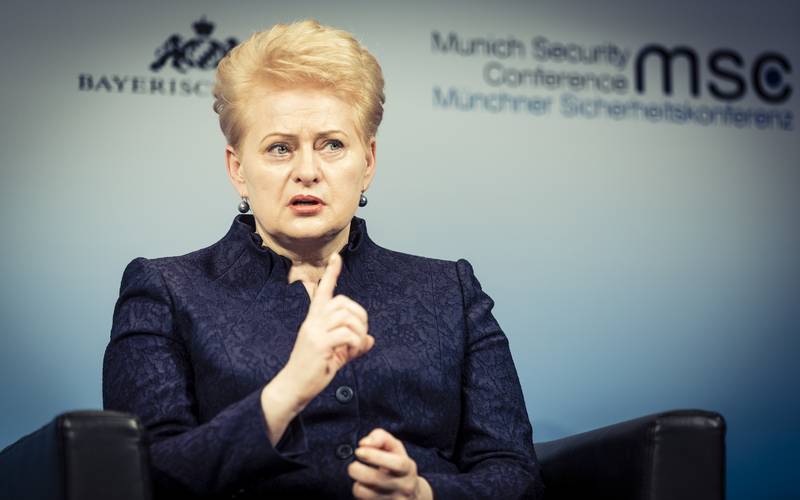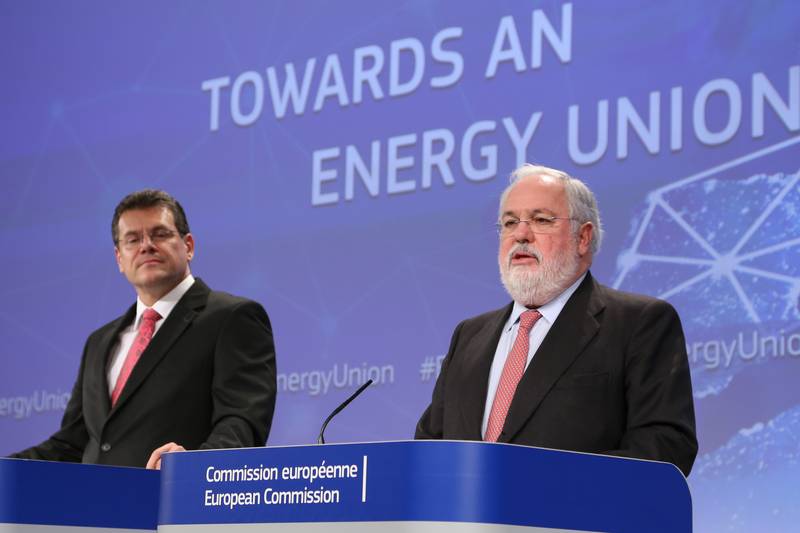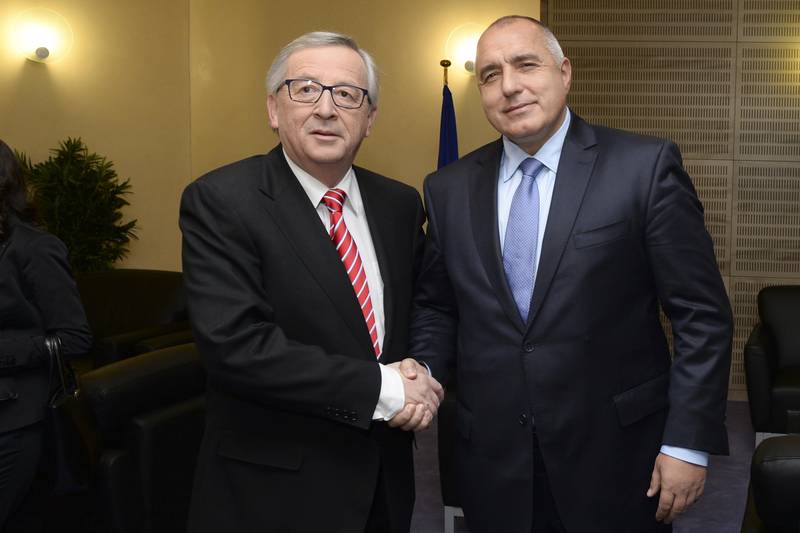Passing 2014 without a Single Energy Market?
Hannes Lenk, intern, January 4, 2013
 The single energy market has been on the European Commission’s agenda for quite some time now. It is set to be accomplished by 2014, but currently it looks as if the EU is set to miss its 2014-target. In its recent communication, published on 15 November 2012, the Commission admits that the "EU is not on track to meet this deadline" but highlights the improvements that have already been achieved since the incorporation of the internal energy market as an essential part of the Single Market policy. The communication identifies a lack of commitment by the member states to effectively implement the Third Legislative Energy Package and supplementing regulations. Hoping to bring member states back on track, the Commission sets out an ambitious 22-step action plan urging member states to commit to their responsibilities under the programme.
The single energy market has been on the European Commission’s agenda for quite some time now. It is set to be accomplished by 2014, but currently it looks as if the EU is set to miss its 2014-target. In its recent communication, published on 15 November 2012, the Commission admits that the "EU is not on track to meet this deadline" but highlights the improvements that have already been achieved since the incorporation of the internal energy market as an essential part of the Single Market policy. The communication identifies a lack of commitment by the member states to effectively implement the Third Legislative Energy Package and supplementing regulations. Hoping to bring member states back on track, the Commission sets out an ambitious 22-step action plan urging member states to commit to their responsibilities under the programme.
Establishing a single market
In its strategic documents - Europe 2020, Energy 2020, and the Energy Roadmap 2050, the Commission paints a clear picture of the importance to balance the three objectives of de-carbonisation of energy production, maintaining steady and secure supply, and improving consumer benefits from a single energy market. The Energy 2020 strategy identified already in 2010 that the adjustment of national energy systems was progressing slowly, threatening the achievement of the EU long-term goals. That message has been repeated on several occasions since. A fully integrated internal energy market is set out to be achieved by 2014. However, a lot is yet to be improved.
In 2011 the single energy market initiative was incorporated as an essential prerequisite of the single market – its “backbone” as the Commission puts it. Signs of progress are clearly visible, but it is not sufficient to achieve a fully integrated internal energy market by 2014. In the Single Market Act II, published early in 2012, the incorporation of the single energy market is one of the 12 key actions, aimed at completing the single market programme, emphasising on the strategic role of the energy market for the conclusion of a single market. It is "an enabling industry providing an essential service to the other sectors of the economy", says the Commission in a communication published in April 2012.
However, to that end, the Single Market Act II is merely repeating the philosophy of the Single Market Act I of 2011. The adoption of the Single Market Act II highlights the pressure on the Commission to speed up progress to keep track with its commitments. With a specific focus on the single energy market, the Commission elaborated in detail the existing challenges and shortcomings preventing the 2014 deadline to be met.
Rather than considering the single energy market as a goal in itself, the Commission pursues the view that it constitutes a tool for jobs creation and social improvement through enhancement of competitive and innovative products that are passed on as real benefits to consumers and SME’s. It will delivers what "EU citizens aspire to most: economic growth, jobs, secure coverage of their basic needs at an affordable and competitive price, and sustainable use of limited resources".
Room for improvement
The communication sends a clear message to the member states: "The building  blocks are there but they must be implemented effectively for the internal energy market to work". The Commission identifies delays in the effective transposition of the Third Energy Package as a negative driving force hampering the opening of markets as well as the protection of consumers. A rigorous enforcement of EU competition and state aid rules is therefore essential to increase pressure on the member states. In general, market entry for new competitors must be facilitated to allow diversification regionally and with regard to third-country suppliers. The Commission points out, however, that enforcement is insufficient so long as "available price differentials remain unexploited" by consumers in the market. As the Commission puts it, "citizens and small businesses must be enabled, and feel incentivised, to play an active role in the market". A diversification of services and effective development of value-added innovative products cannot take place without consumer demand. This, in turn, requires effective consumer protection and information that is made available to consumers.
blocks are there but they must be implemented effectively for the internal energy market to work". The Commission identifies delays in the effective transposition of the Third Energy Package as a negative driving force hampering the opening of markets as well as the protection of consumers. A rigorous enforcement of EU competition and state aid rules is therefore essential to increase pressure on the member states. In general, market entry for new competitors must be facilitated to allow diversification regionally and with regard to third-country suppliers. The Commission points out, however, that enforcement is insufficient so long as "available price differentials remain unexploited" by consumers in the market. As the Commission puts it, "citizens and small businesses must be enabled, and feel incentivised, to play an active role in the market". A diversification of services and effective development of value-added innovative products cannot take place without consumer demand. This, in turn, requires effective consumer protection and information that is made available to consumers.
Although, according to the communication, there is a visible increase in available price comparison tools, generally more transparency and competitive prices in the energy market, the Consumer Score Board identifies price comparison and consumer switching as one of the major consumer challenges. It estimates that 62% of EU citizens could switch to a cheaper tariff, saving combined up to EUR 13 bn. On the other hand, enabling consumers to fully exploit the retail energy market across national borders requires the existence of a pan-European transmission grid. In October 2011 the Commission published a proposal for guidelines for a trans-European energy infrastructure but not much progress has been made on the issue since. The proposal tackles the efficient integration of national grids with the objective to abolish barriers to energy supply systems on national boundaries.
Another issue highlighted by the Commission is the necessity for a flexible energy supply that allows consumers to better control their spending and encourage peak-time energy savings. Apart from regulatory barriers for dynamic pricing models a major challenge constitute capacity mechanisms. Energy producers have traditionally been paid only for energy they have produced. In the recent past, however, governments tend to encourage energy producers to create excess capacity to guarantee secure supply. The downside of this mechanism is inflexible base-load generation that could close national energy markets and adversely affect the use of less reliable renewables. The Commission encourages governments to consider models that incorporate cross-border supply as alternative back-up supply source rather than inflexible capacity mechanisms.
However, an efficient cross-border alternative to guarantee supply security is only viable if a well-functioning trans-European transmission grid is put in place. The use of national capacity grids will hamper, as the Commission explains, the offer of value-added products for consumers such as dynamic pricing structures. Next to enforcement and consumer activation, the establishment of a single energy market faces a transitional challenge towards a de-carbonised energy market. This will require, as the Commission points out, an overhaul of national reward schemes and charges for renewables and state intervention in the energy production and supply. This links the transitional challenge inherently to an effective enforcement of EU state aid rules. As mentioned above, a rigorous enforcement of competition and state aid rules is key in the  Commission’s action plan. This requires, however, a new approach to exemptions for grounds of environmental protection to produce efficient results.
Commission’s action plan. This requires, however, a new approach to exemptions for grounds of environmental protection to produce efficient results.
On the other hand, the complex surcharges and levies applied to cross-border energy supply have also been identified as placing an obstacle to effective price comparison for consumers. Transparency in national reward schemes might thus yield direct consumer benefits and channel state intervention through effective state aid regulation on EU level. All in all, it seems the Commission is focused on creating efficient consumer benefits with flexibility and transparency in the retail energy market without lacking security of supply nor questioning the transition towards a low-carbon energy production. It transpires from the communication that the rise and fall of the single energy market lies with the member states and their commitment to the EU objectives. The full transposition of the third energy package and supplementing regulations is the foundation on which to build a cross-border competitive system of flexible and de-carbonised energy at no cost of security of supply.
 Dalia Grybauskaite | © MSC/Koerner
Dalia Grybauskaite | © MSC/Koerner Maros Sefcovic, Miguel Arias Canete | © European Commission
Maros Sefcovic, Miguel Arias Canete | © European Commission Jean-Claude Juncker, Boyko Borissov | © European Commission
Jean-Claude Juncker, Boyko Borissov | © European Commission